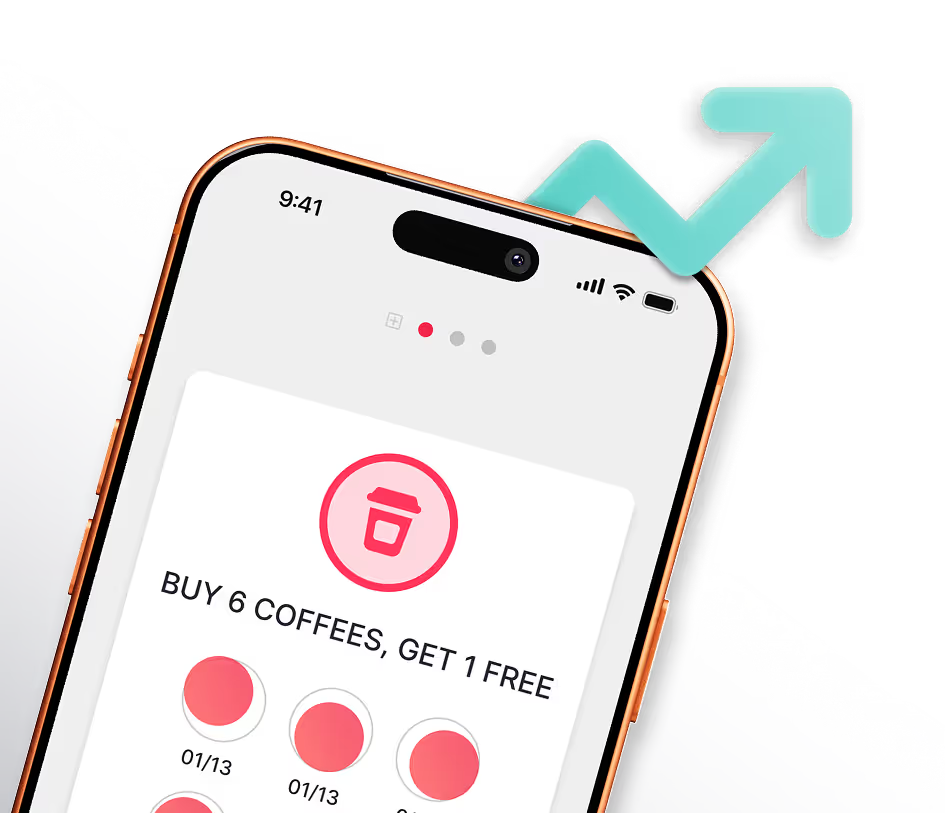What’s Your Motive for Having a Loyalty Program?

Loyalty programs come in all shapes and sizes, just like the businesses that utilise them. And while many of us still think of those old paper punch cards that promise a free X with every sixth purchase of Y, the reality is that the modern day loyalty program does a lot more than simply increase customer retention.
As loyalty programs have evolved, so have business owners’ motives for having one. There are all kinds of reasons for creating a loyalty program now. Last year, the Harvard Business Review asked 400 businesses from various industries around the world what they intend to achieve with their rewards programs, and the findings were quite diverse.
1. Attracting new customers

65% of businesses want their loyalty program to attract new customers.
Despite loyalty programs being synonymous with customer retention, two-thirds of businesses are actually using their loyalty program to attract new customers.
This is interesting, because while it’s no secret that a good loyalty program will encourage your existing customers to help you attain new ones, customer retention and customer acquisition are still very different things.
You can either design your loyalty program to achieve one or the other, or you can create a killer loyalty program that achieves both simultaneously.
2. Establishing an emotional connection between the brand and the customer

57% of businesses want to build a stronger emotional connection between their brand and their customers.
This is no surprise, considering that customers with an emotional connection to a brand have a 306% higher lifetime value than those who don’t.
Many companies are realising that customer engagement is more important than customer spending, because in the long term a loyal customer is more valuable than a repeat customer.

3. Gaining data for customer insights

50% of businesses use their loyalty program to gain customer data.
One of the primary benefits of a digital loyalty program is that it allows you to gain valuable insights into what your customers want, and why.
Every time a loyalty program member makes a purchase, the digital loyalty platform logs the transaction details, and this facilitates a steady accumulation of data that allows the business to segment its customers into key demographics and send targeted marketing.
This form of below-the-line marketing is much more effective than above-the-line strategies like TV and radio ads, billboards and other campaigns that aim to reach everyone, rather than targeting a specific audience.
By gaining customer data, businesses can offer a truly unique and personalised experience to each individual loyalty program member, and this helps with that emotional connection I mentioned earlier.
4. Increasing referrals

49% of businesses use their loyalty program to increase word-of-mouth referrals.
As I mentioned earlier, a decent loyalty program will attract new customers as well as retain existing customers, and the main reason for this is word-of-mouth referrals. By incentivising your existing customers to help you attain new ones, you create a system that is constantly working for your business to boost sales and increase revenue.
App-based services like Uber and TransferWise incentivise this behaviour on a regular basis by offering rewards for referring peers. Once this referred customer starts regularly engaging with the brand (whether it’s a weekly rideshare or monthly transfer of funds from one currency to another), the cost of the reward is quickly outshined by the revenue gained from this new customer.
If your goal is to use a loyalty program to increase referrals, it’s crucial that you map out how the system will work and forecast the long-term profits vs. the initial cost of giving away rewards or discounts in exchange for signups.
Check out our other article on how to measure the ROI (return on investment) of a loyalty program.
5. Cross-selling and upselling

42% of businesses use their loyalty programs to cross-sell and upsell other products or services that they offer.
Cross-selling and upselling is a major part of Starbucks Rewards’ structure. When the global coffee chain’s decision makers sat down to design their new loyalty program, “upsell” and “cross-sell” were clearly the primary objectives.
Why else would the mobile app send members notifications to inform them that they can enjoy a free coffee of their choosing if they try these three amazing new menu items before Friday? Or that you can take advantage of “Double Points Tuesdays” to receive a free slice of Christmas-themed cake with your eggnog latte throughout December?
While Starbucks gamifies the process to make the customer experience fun and exciting, ultimately the brand is using its rewards program to promote new products and increase customers’ basket size… quite successfully, I might add. You can read more about Starbucks’ nifty techniques and strategies in our Starbucks Rewards case study.
6. Increasing ATV (average transaction value) or FOV (frequency of visit)

31% of loyalty programs aim to increase customer spend or boost ecommerce site visits.
Just under a third of businesses surveyed in the Harvard Business Review claimed that they want their loyalty programs to increase the customer’s average basket size and get them coming through the door more often (either literally or online).
Anyone who has the mymaccas app on their phone can vouch for the fact that McDonald’s is clearly all about upping the ATV and FOV.
Not only does McDonald’s send incredibly enticing offers to your device that are almost certain to persuade you into upgrading your order, but you’re also likely to receive this offer right around lunch-time, or right as you happen to be walking past a McDonald’s…
The enticing offer for a discounted side or opportunity to try a new product takes care of the ATV, while the clever timing or location-based notification takes care of the FOV. You can learn more about McDonald’s ingenious targeted marketing tactics in our mymaccas case study.
7. Re-engaging lapsed customers

23% of businesses use their loyalty program to re-engage customers who haven’t made a purchase for a while.
As any business that’s been around for a while is fully aware, repeat customers become lapsed customers all the time.
Someone who has been a familiar face in your store for six months suddenly disappears without a trace, for any number of reasons. Perhaps they moved away, found a cheaper shop down the street, or had a bad customer service experience with one of your staff members.
Without any customer data, that customer is lost forever and you’ll never even know what their reasons were for no longer engaging with your brand. However, with a decent digital loyalty program, you can try to win them back. If you wanted to, you could literally ask them why they don’t shop with you anymore, and attempt to resolve the issue.
It could be as simple as a push notification: “Hi Mark, we miss seeing you around the store! Come in before the end of the week for a free X with any purchase of Y.”
While this can be an automated offer that periodically gets sent out to any loyalty program member who hasn’t made a transaction in the last three months, in the eyes of the customer it can be seen as a very personal message that establishes your appreciation for their ongoing business.
Another technique is to reward customers for feedback. If the customer who encountered a rude employee is given the opportunity to tell the business why they no longer shop there (and the complaint is handled properly), that customer is far more likely to come back.
It costs five times as much to acquire a new customer than it does to retain an existing one, and this applies for lapsed customers as well. A little re-engagement can go a long way!
Establish what you want your loyalty program to achieve BEFORE you create it.

As you can see, there are a lot of different motivations for implementing a digital loyalty program into your business, and the right rewards structure ultimately depends on your specific business.
It’s crucial that you first establish which of the goals listed above you want to achieve, and then design your loyalty program to cater for these factors.
At Stamp Me Loyalty Solutions, digital rewards programs are our bread and butter! We can help you create a fully customizable loyalty program for your customers to download as an app, and this loyalty program can be tailor-made to achieve specific goals – be it increased customer engagement, more referrals, upselling opportunities, or all of the above.
More Posts

It’s often more than you think. Plug in your daily customer numbers to see your potential returns instantly.






.webp)